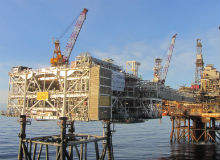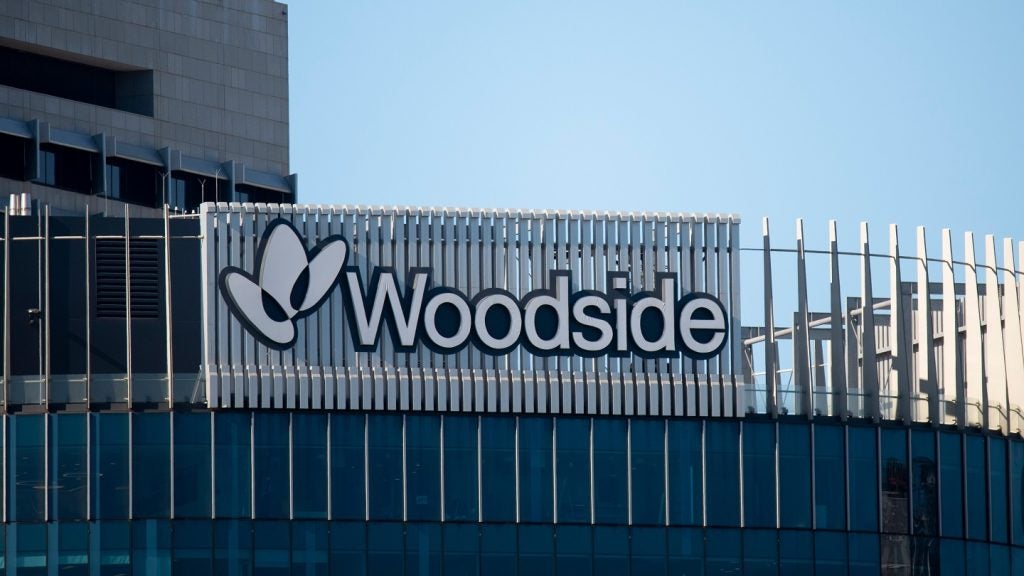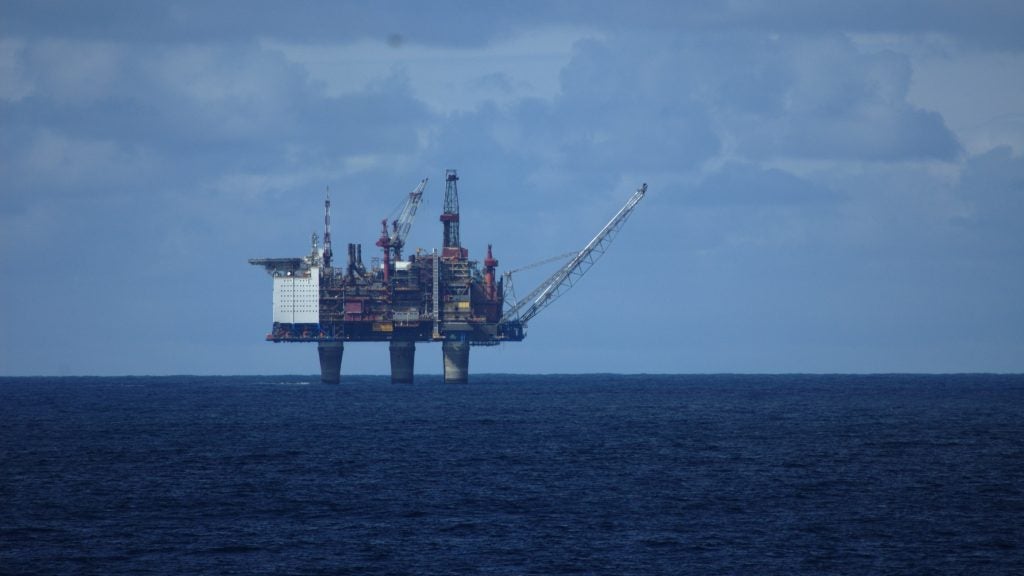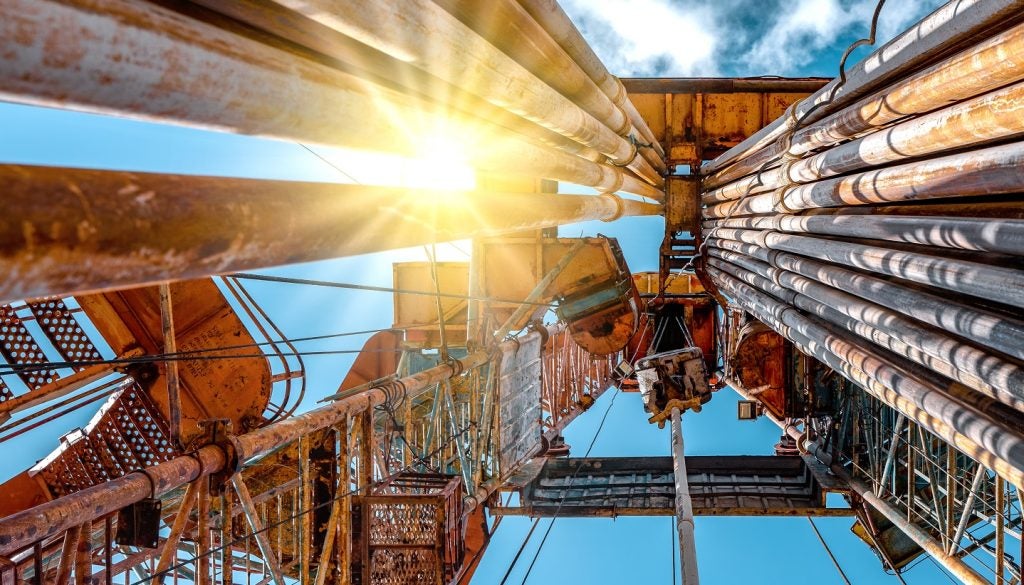

Graham Kennedy is chief technical officer and a member of the board of directors at OGN Group, which provides engineering, procurement, construction and installation services to the offshore oil and gas and renewable energy industries. His responsibilities include engineering, ICT, construction, compliance, production management and planning.
Kennedy has over 35 years’ experience in design construction and operations in the onshore civil engineering and offshore oil and gas sectors. He managed the FEED phase of the Forties Alpha Satellite Platform (FASP) project, which aims to extend the production life of one of the oldest fields in the UK North Sea until 2030.
Julian Turner: Please describe OGN’s involvement in the Forties Field, including the company’s £400m contract to design and build the Forties Alpha Satellite Platform (FASP) for Apache.
Graham Kennedy: The whole concept for the Forties Alpha Satellite Platform (FASP) began life as a simple nine-slot wellhead platform that would allow new wells to be drilled and bring more production flowing on one of Apache‘s existing platforms in the Forties Field.
In 2009, OGN completed a concept study for a simple wellhead tower at the Delta fixed platform and at the same time Apache completed one for Alpha; in late 2009 it was decided to amalgamate the ideas for both into a functional specification for a new bridge-linked platform to be located next to Forties Alpha. Between October 2009 and March 2010 the actual design went through quite a transformation from a simple nine-slot wellhead platform to an 18-well, full-production version with field wide power generation support facilities.
See Also:
OGN won the EPC contract in March 2010 and because there were brownfield enhancements taking place on other platforms in the Forties Field, rather than do a lot of brown field modifications the decision was taken that it made more economic sense to add multiple field-wide facilities to the new bridge-linked platform.
How well do you really know your competitors?
Access the most comprehensive Company Profiles on the market, powered by GlobalData. Save hours of research. Gain competitive edge.

Thank you!
Your download email will arrive shortly
Not ready to buy yet? Download a free sample
We are confident about the unique quality of our Company Profiles. However, we want you to make the most beneficial decision for your business, so we offer a free sample that you can download by submitting the below form
By GlobalDataApache is drilling the very first well right now; the jack-up rig Rowna Gorilla VII is over the FASP platform. The FASP topside was also designed to support a future 2,000t mobile drilling unit (MDU), and there are plans to add a mobile joining unit on the platform at a later date. Apache has used MDU technology elsewhere in the Forties Field – on the Echo fixed platform, for example.
JT: What specific economic and operational benefits does the FASP offer to Apache?
GK: There are two main benefits. First, you have the drilling aspect, in terms of getting more well slots in the field. Virtually all the existing slots were used up, but by having 18 well slots Apache now has an additional five, maybe ten years’ worth of drilling opportunities in the Forties Field.
Second, Apache created a large power ring main that linked up the Forties platforms so that they now have shared stable power. Additional generation was also added to the FASP platform, which at the time caused a bit of disruption to the design, but it was the right decision and a sensible way forward. Instead of being a major brown field modification, it became a green field addition to the FASP, and this extra capacity allows Apache to overcome shortages caused by sudden peaks in power demands, a bit like the national grid does for the UK.
Production efficiency has become a huge issue in the industry. Production uptime can be extremely variable and most platforms in the North Sea run at around 70% due to unreliable power availability. Apache added extra gas compression and fuel gas facilities to process the new production from the FASP and allow it to send the power around the ring main serving the existing platforms. In terms of efficiency, that’s made a significant impact in the field generally.
JT: Why has the Forties Field continued to produce oil while many North Sea fields have dried up?
GK: The key factor that has extended the life of the Forties Field beyond most of its contemporaries is drilling technology. Apache is a drilling company at heart and it has applied this knowledge to the Forties Field in a way that hadn’t been done before. BP thought the Forties field would be finished around 2005 but clearly that’s not the case.
When you look at the geology of the Forties Field, there are lots of little trapped volumes of oil that companies wouldn’t go after because it wasn’t worth it, it was too expensive, but now modern platform-based drilling has made it economically viable to go after these smaller plays. You can go and do subsea tie backs, but subsea wells are much more expensive by their nature, whereas if you have a new platform in the field, you can head off almost anywhere thanks to directional drilling.
If you were developing the forties field today you might have one of two platforms with drilling facilities and a series of subsea wells. It’s a different approach to drilling nowadays in that you drill directional horizontal wells, and platform-based drilling has made the key difference in terms of enhancing production reliability and the cost-effectiveness of the Forties Field as a whole.
JT: Is Apache’s approach in the Forties Field indicative of a move towards marginal plays globally?
GK: Over the last 10-15 years the global trend has been that the traditional large players would rather spend money in easier lower cost areas and leave the hard work to others. They have moved on whereas, attracted by tax concessions, the new players in the North Sea have moved in and tend to be less conservative, more adventurous. It’s good for the industry and the country because it keeps oil production going, but it is also more expensive and that’s where it becomes an issue – it doesn’t take much to make these smaller plays uneconomic.
However, the technologies that we have are proven, so the risk element is less. A lot of the remaining plays are marginal, although, amazingly, the Norwegians especially, have also discovered some of the biggest oil fields in the last few years, including the third largest oil field in the North Sea. That’s down to 3D seismic technology, as well as the understanding of geology, and selected appraisal wells have proven these reserves up and looking in areas previously not explored.
JT: What are the major challenges facing operators in the UK North Sea in the short to mid-term?
GK: In terms of the UK oil and gas in the UK sector, we had all the fuss with the Scottish referendum with the SNP claiming there’s 24 billion barrels still in the North Sea and Sir Ian Wood saying quite rightly ‘there’s maybe that down there but you will only get 14 billion out.’ That oil is hard to get hold of and it is expensive oil now. A lot of it is situated in smaller fields, so unless there’s a host platform nearby it can easily become far too costly to recover.
Another challenge with designing FASP was constructing a new platform to the modern standards and then linking it in to a platform that was designed in the early 1970s. The old designs were being subjected to retrospective design criteria so it was a meeting of the old and the new standards in the oil and gas industry. There were a few interesting things that we were challenged with on the old platforms so all in all Forties generally been enhanced as a result.
I first started working in the Forties Field in 1983 and have got to know some of the technical issues on the alpha platform over the years and we solved some of these inherent problems as part of the FASP development.
The platform has a 20-year design life, but they tend to go on longer than expected. Hopefully as soon as FASP proves itself and gives Apache the deserved returns on its investment, then that may strengthen the case for another lookalike platform further down the line.
Follow Julian Turner on Google+


.gif)




